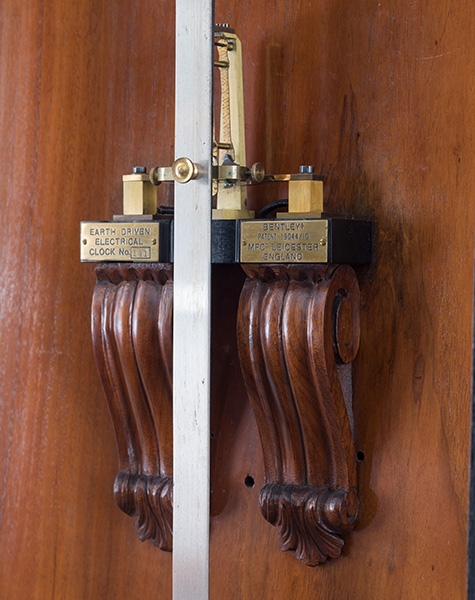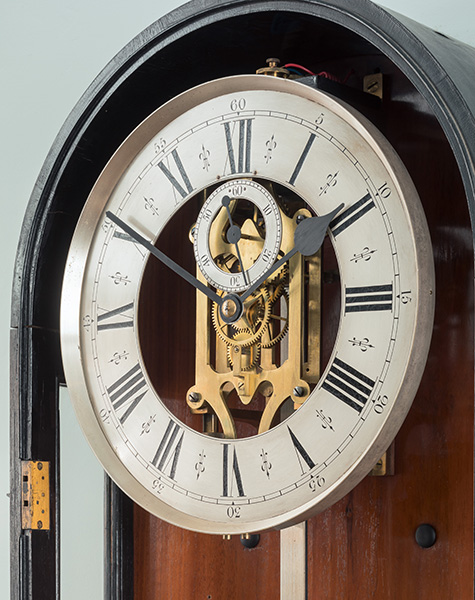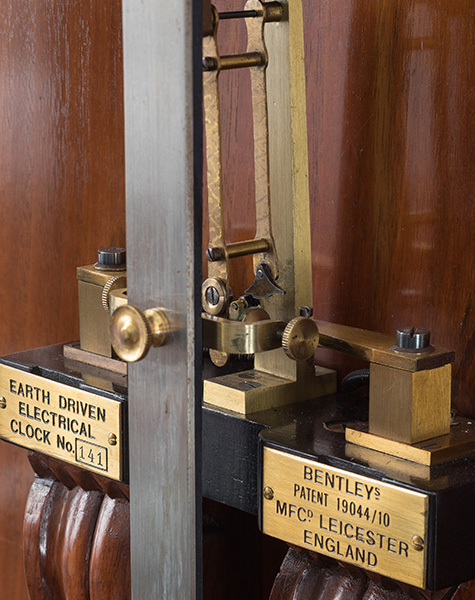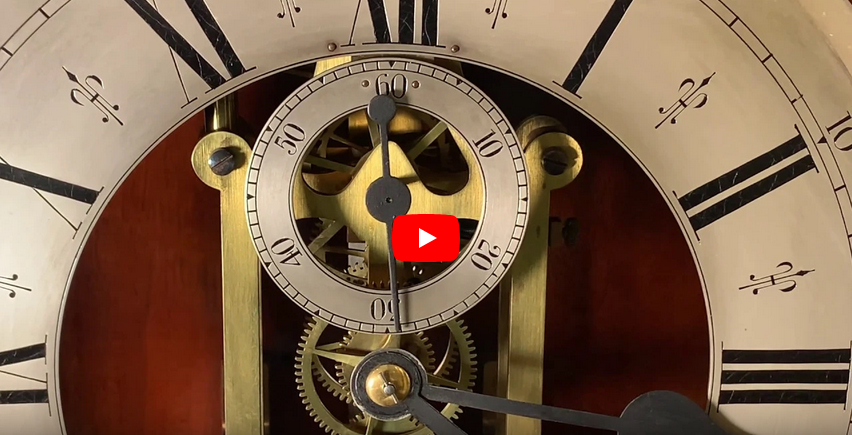[javascript protected email address]
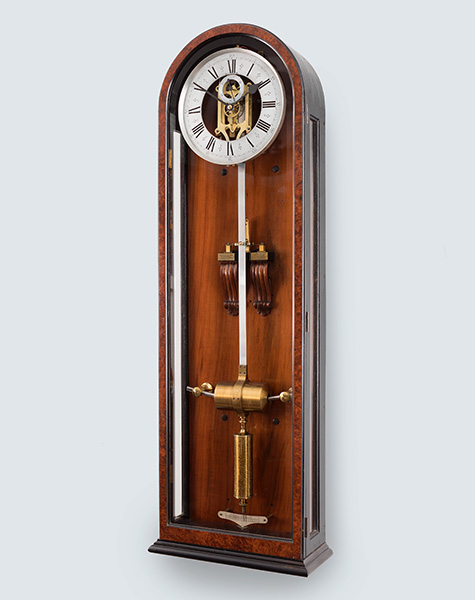
Percival Arthur Bentley, Leicester, England
Circa 1912
Price on application. Please get in contact.
56 inches (143cm.) high
An extremely rare burr walnut, mahogany and ebonised pear wood Earth-Driven electric wall regulator No 141. The handsome arched wall-mounted case has a burr walnut veneered door, ebonised glazed sides and mahogany backboard. The door has twin locks and internal dust-exclusion moulding. All the glass to the front and sides are bevelled and original to the case. The silvered chapter ring has Roman and Arabic numerals with blued steel hands and a subsidiary seconds ring. Skeletonised movement with long flat steel-rod pendulum with a brass horizontal cylindrical magnetic bob floating over a bowed magnetic bar which is fixed to the backplate the pendulum terminating with a regular vertical cylindrical bob which beats against a silvered beat scale. The make-break system based on a cam-roller is mounted on a pair of handsomely carved mahogany volutes mounted with two brass plaques engraved EARTH DRIVEN ELECTRICAL CLOCK NO. 141 BENTLEY PATENT 19044.10 MFCo. LEICESTER ENGLAND. P.A. BENTLEY P.A. Bentley, better-known as PA to his friends, was a trained electrical engineer. His first job was working for the engineers Slater & Oaks, making telephone equipment. They had a very close working relationship with Smiths of Derby who made the clocks for the Midland Railway. It's thought this is may be where Bentley got his first taste for horology. By about 1900 Bentley moved to work for the Automatic Telephone Company (ATC) where he became foreman and came into contact with Lord Kelvin who asked Bentley to undertake some precision engineering work for him. Whilst at the ATC Bentley made a self-winding electric skeleton clock for which Lord Derby awarded him a medal of merit in 1902 . Bentley began his experimenting on electrical horology entirely unaware of Alexander Bains earlier or current work on electrical horology which is remarkable given the similarity to each others work; in very basic terms the real difference was that Bentley used wheels for his make-break system whereas Bain used metal slides. In 1910 Bentley set up a small workshop at 161 Waterloo Street, Burton-on-Trent and brought out his first and most important patent No. 19,044 which described his system for making earth-driven electric clocks. Within just two years his clocks were widely acclaimed selling not only in the UK, but also in the USA and Canada, in fact one of his salesmen, D.J. Jarvis, was lost on the Titanic in on April 15th 1912 when sailing to New York on business. By 1914 he employed 12 skilled workmen, expanding exponentially thereafter to help the war effort The present clock is currently driven on three modern batteries hidden in the base, but in fact the earth originally powered his clocks. It seems almost fictional to think about it; nevertheless Bentleys clocks were powered by burying a carbon and a zinc electrode in damp earth three to four feet deep. The preferred soil would be damp with drainage, but not too sandy as it was necessary to keep it moist, peat and clay soils were to be avoided. This earth battery provided 1 volt of energy at the clock terminals. The earth-driven clocks were remarkably accurate capable of keeping time to within a minute a year and in fact the one in the Leicester Museum ran accurately for 40 years without requiring any attention whatsoever. The cases were made by Thomas Jones, cabinet maker in 61 Bardolph Street, Leicester and for the main the clocks were retailed through Harrods store in London. During the First World War the company helped the war effort by making screw gauges which were used in munitions for the Army, Air Force and Navy. Post war the company ceased making clocks and concentrated on making machines for making hosiery products, it was later acquired by a rival engineering company.

